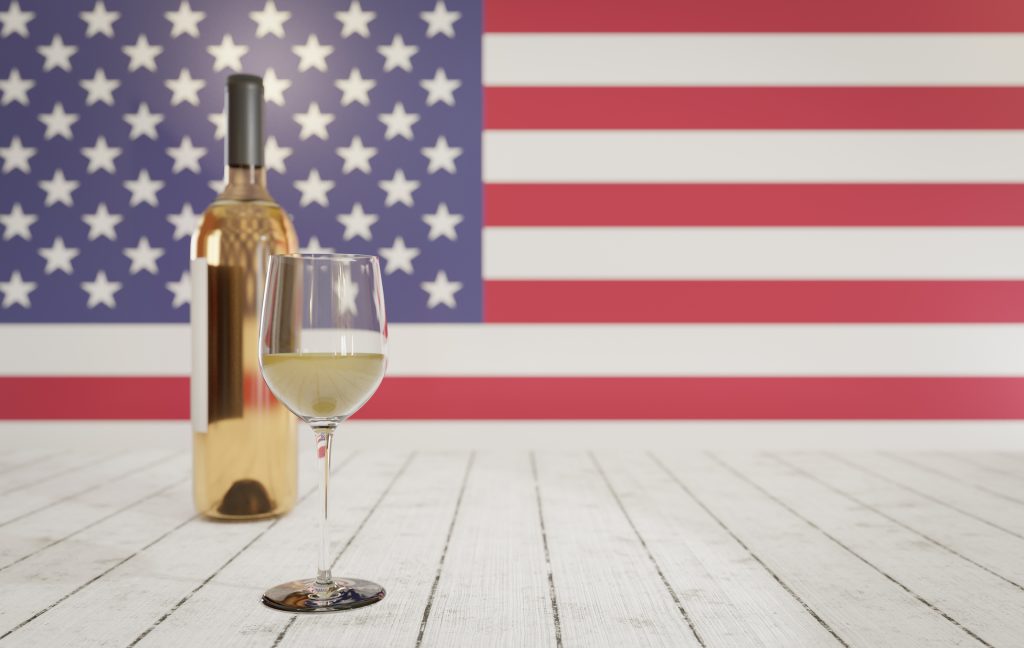US direct-to-consumer shipments fall as costs soar
Escalating costs dampened the volumes of US direct-to-consumer (DtC) wine shipment during 2023 the latest Direct-to-Consumer Wine Shipping Report from Sovos Shipping Compliant has found, with California seeing the largest declines in any state.

Volumes were down for an “unprecedented” second year in a row, falling -6.5% – or 500,000 cases, however the value remained flat at $4.1 billion, with flat growth of only 0.1%, due to the demand for higher price wine remaining stable.
The report, which is compiled by Sovos ShipCompliant and WineBusiness Analytics, noted however hat the downward trends was not “unexpected” after the record-setting volumes of 2020 (which grew 27% to around 8.5m cases) and 2021 (a more modest rise of 1.4%)
Wines with an average price of under $30 per bottle – which represents just under half of the channel (43%), saw a12.9% decline in volume terms, while the at the other end of the price spectrum, wines priced at $100 or above — which accounts for less than 10% of the DtC channel—saw a 5.6% increase in shipments.
“This dynamic represents a classic case of inflation having its biggest impact on consumers of more modest means while higher-income consumers avoid significant impact from rising prices,” the report said.
As a result, there was a 7.1% rise in the average price of a bottle of wine for third consecutive year, to US$48.35 – well above the average, although this was slower than the 9.7% and 11.8% recorded in 2022 and 2021.
Partner Content
However prices rose most strongly in the Autumn – the average price per bottle shipped in October and November rose by 11.9% and 11.4%, respectively, from the previous year, to $63.96 and $58.16 respectively.
The wineries that saw the largest impact of the slower consumer sales and shipments were the largest wineries with their less expensive wines, it said, seeing a 12.9% increase in the average price per bottle shipped, while experiencing a 13.2% decrease in the volume of shipments. Only 2% of producers fall into the large winery category (those producing 50,000 – 499,999 cases), with around half (50.2%) producing fewer than 1,000 cases, and a further third (31%) producing up to 5,000 cases. However wineries of all sizes and in all states were affected, the report found, “save for Washington State wineries, which bucked the trend and increased their volume and value of shipments”.
It also noted that the effects of inflation and climbing interest rates impacted both wineries and consumers, with the decline in alcohol consumption among younger consumers and greater competition from other drinks as additional headwinds. The number of states legalizing cannabis “undoubtedly has an impact on alcohol sales”, it said.
Washington bucks the trend
Drilling into the figures across the different states reveals a notable regional variance, the report said, with Washington bucking the downward trend to outperform all other regions. It was the only state to see volumes increase, rising +5.5% volume, while value shipments rose +11.0%. This was largely due to its lower-than-average bottle price rise, up only 5.2% to US$39.90 however, the state saw particular increases in shipments of Cabernet Sauvignon, up 22.4% in volume and 34.2% in value compared to 2022, despite an increase of 9.7% in the average price per bottle shipped.
Meanwhile shipments to California plunged 14.4% in volume terms, more than twice the size of the decline of the overall DtC channel and the largest year on year decline in shipments to California customers since 2010. Sonoma County saw the largest increase in price, with the average price per bottle jumping 10.1% compared to 2020 and also maintained its position in volume terms, sending nearly a third (30%) of its wines direct to consumers. However wineries in Napa Valley continued to dominated in value terms, accounting for 47.1% of the value of DtC shipments, despite only accounting for 26.4% of the total volumes, due to the $86.43 average price per bottle shipped in 2023—the highest-ever price per bottle
shipped for the region.
There was also a decrease for wines from Oregon, with volumes down 9.2% and value of shipments also falling, down 2.6%.
Related news
Strong peak trading to boost Naked Wines' year profitability




